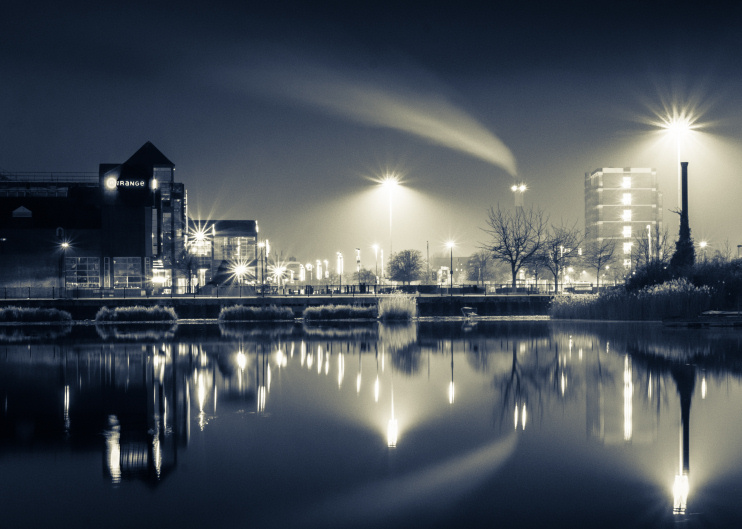Surrey Quays
Surrey Quays, Southwark
The redeveloped site of the former Surrey Docks, which (in theory but not in common parlance) includes Greenland Dock and Canada Water

In 1695 Wriothesley Russell (later second Duke of Bedford) married Elizabeth Howland and the Russell family thus gained control of the potentially valuable Rotherhithe peninsula. He was 14 at the time and she was 11. Excavation of the Howland Great Wet Dock (later Greenland Dock) began the following year and work was completed by 1700.
In the 1790s theft and congestion caused chaos in the Pool of London, creating an intense demand for additional inland facilities, and over the following century several rival companies filled 372 acres of the peninsula with a series of new docks. Ruinous competition between the companies prompted their merger in 1865 as the Surrey Commercial Docks Company. The East London Railway traversed the docks in 1869 and Deptford Road (later Surrey Docks) station opened in 1884. The Port of London Authority assumed control of the docks after its establishment in 1908.
The Second World War brought the devastation of the built environment and displacement of the local population. Many evacuees never returned and those that did were in desperate need of rehousing.
Bermondsey council built blocks of flats, while the PLA partially rebuilt the docks. However, with the decline of the whole of the London Docklands, the Surrey Docks were progressively shut down in the 1960s and closed completely in 1970.
The whole estate was acquired by the Greater London Council and some grandiose schemes were mooted, including a Channel Tunnel rail terminal, an Olympic park and a vertical take-off and landing (VTOL) airport. However, a recession in the commercial property market meant that most of the site was redeveloped with mixed-tenure housing after the London Docklands Development Corporation took over in 1981.
Most of the docks were filled in, unlike those across the river. Shopping and leisure facilities filled most of the Canada Dock site. A small part of Lavender Dock became a pond and ecological study area for schoolchildren. The renaming of Surrey Docks station as Surrey Quays in 1989 caused some resentment at the time but has since established the area’s reinvented identity. Private housebuilding has continued into the 21st century, with developers referring to projects in parts of Deptford as ‘near Surrey Quays’.
Almost a third of the residents of the Surrey Docks ward are in their twenties and there are relatively few children or old people. According to the 2011 census, two-thirds of the population is white – a high proportion by the borough’s standards, though down from four-fifths in 2001.
Local band Squeeze sang about the Surrey Docks on ‘It’s Not Cricket’, a track from the album Cool for Cats.
